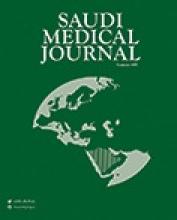Abstract
OBJECTIVE: To predict women at risk of preeclampsia in the second trimester by the assessment of maternal cardiac output (CO).
METHODS: Between October 2001 to November 2003, we carried out a cross-sectional, prospective, hospital-base study in Shiraz University of Medical Sciences, Shiraz, Iran. Cardiac output was measured in 102 normotensive women at gestational age 19-25 weeks by Doppler echocardiography. Patients with CO >7.4 L/min were considered high risk group (Group 1) and those with CO </=7.4 L/min were in Group II. They were followed-up until delivery and the incidence of preeclampsia was determined in both groups.
RESULTS: Twenty percent (6/30) of patient in Group 1, and 1.4% of patients in group II developed preeclampsia (p<0.003). A cut off point of 7.34% L/min was chosen for prediction of preeclampsia that showed 85.7% sensitivity, 74.2% specificity with a negative predictive value of 98% and positive predictive value of 20%.
CONCLUSION: Cardiac out put is significantly elevated in preclinical state of preeclampsia. Echocardiography is a non-invasive method to evaluate the maternal homodynamic during the second trimester and can help to identify high-risk patient before the development of preeclampsia, thereby it may improve the outcome of pregnancy.
- Copyright: © Saudi Medical Journal
This is an open-access article distributed under the terms of the Creative Commons Attribution-Noncommercial License (CC BY-NC), which permits unrestricted use, distribution, and reproduction in any medium, provided the original work is properly cited.






